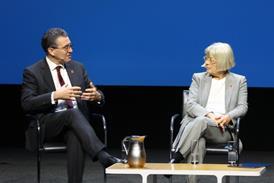Years ago I stood at the top of the hill at Alexandra Palace and breathed the fresh north London air with relief at completing the Law Society finals. The pleasure of a one-time pass-fail examination (of which students have been long deprived during the rise and eclipse, if not fall, of the Legal Practice Course) will re-emerge with the SRA’s Solicitors Qualifying Examination stages 1 and 2. There are obvious regressive elements to this renewal of what is, in effect, a grown-up version of the 11-plus. But one advantage (if the SRA is nimble enough) will be the potential flexibility for educational providers, old and hopefully new, to respond to the way that technology will transform legal services and careers.
You can tell the growing influence of technology on lawyers by the number of studies published by law societies and their equivalents around the world. There have been five in less than a year, emanating from the US, Singapore, New South Wales, the International Bar Association and our own Law Society. The latter, Capturing Technological Innovation in Legal Services, is rather good and I would advise you to read it. Representative legal professional bodies face difficulties in reporting on change affecting members. They have conflicting interests and experiences. This paper deals with that through the form of an enquiry into the experience of members of the profession. In my view – which, in the interests of full disclosure, is infused by a confusing history ranging from enemy to employee – this is precisely the kind of horizon-scanning function that a representative body should have.
The five studies have different approaches. The Singaporeans favour a ‘Leninist’ specification of minimum technical competences. New South Wales leavens its analysis with coverage of the ‘Gartner hype curve’ – the assertion that, in this area, major hype precedes actual change. That certainly explains the almost daily news of IBM Watson’s latest triumphs. The IBA concentrates on artificial intelligence (AI), which almost all major commercial firms are racing to harness with various in-house collaborations and interest in tech start-ups. The Americans have followed their report with action. The ABA Center for Innovation has been established, its key function being ‘to highlight what’s new and creative in the legal innovation space’.
How can exam questions reflect the fast-changing world of practice?
Characterisation of the different aspects of technological change varies. Thomson Reuters’ David Curle, an informed commentator in the field, has corralled current developments under 11 headings. He helped London-based Legal Geek, the organisation leading UK legal start-ups, to produce a version cleverly visualising around 60 as stops on six tube lines. Overall, the number of legal tech start-ups is enormous, particularly in the US. Stanford University’s CodeX centre has a searchable database of 715. US expert on the field Robert Ambrogi estimated to the ABA Techshow in April that the true number was probably around 1,400.
The Law Society’s assessment of the effect of all this change was representative of its sibling bodies: ‘Solicitors and lawyers face a future of change on a varied scale… Business as usual may not be an option for many, indeed for any, traditional legal service providers. Innovation in services and service delivery will become a differentiating factor.’ It seems helpful to understand innovation as clustering around five functions, for all of which AI could be relevant, as well as a variety of other techniques:
- Search and retrieval
- Data analytics
- Document assembly
- Conversation and interaction
- Productivity and management tools.
All this change in the profession presents a double challenge for educators and the regulators trailing in their wake. First, how can exam questions reflect the fast-changing world of practice? Current practitioners will have to be involved as never before. The iPad only went on sale seven years ago and the iPhone 10: that will be well after many full-time lecturers on the LPC undertook their last case and saw their last client. SRA examiners will need to include some up-to-date lawyers to reflect latest practice, particularly for the practical stage 2. There must be none of the ‘Answer this question as if the Theft Act 1968 were not in force’ of my own Society exam experience.
Most importantly, there must be encouragement for online provision of training, again particularly for stage 2. There are experiments with the use of online tuition and simulation in various parts of the world (notably at universities in Australia and Ryerson in Toronto, Canada). The only justification for the reintroduction of the test of stamina that is a one-time exam is that the cost of tuition can be reduced for those who cannot afford the traditional LPC. Let us hope that providers and the SRA rise to the challenge.
Roger Smith is visiting professor at London South Bank University and former director of human rights group Justice

















![Eleanor Clarke - 029[8]](https://d1d8vslyhr7rdg.cloudfront.net/Pictures/274x183/1/5/1/120151_eleanorclarke0298_527574_crop.jpg)











No comments yet